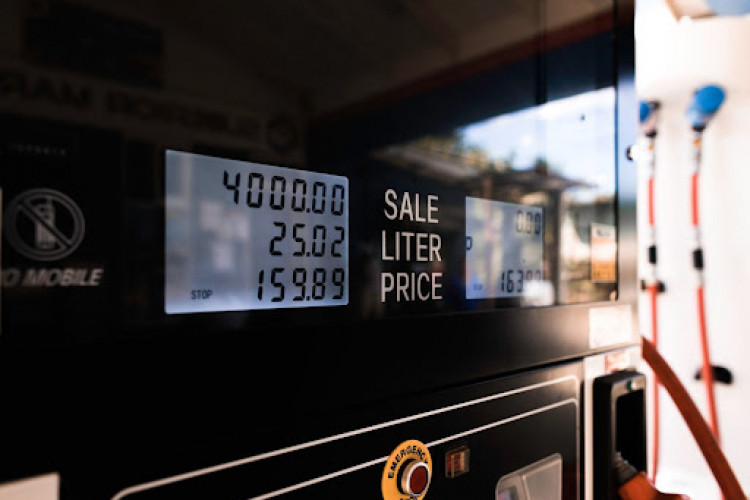














Despite the colonial nuance that manifests itself in the many aged buildings standing in Jakarta’s Old City, the area has directly and indirectly shaped the way the people of Jakarta have been living since the city was still referred to as Batavia. To let it slip into a continuous state of decay would mean that we refuse to acknowledge a large chunk of the city’s history. A bitter beginning is better than no beginning, and certainly much more desirable than a bitter end.
As Goenawan Mohamad wrote in his short piece entitled “To an Old City” (Untuk Sebuah Kota Tua), Jakarta’s Old City is not only a fragment of the urban landscape, but also a memory – a collective memory that has, through the years, affected distant generations. He reminds us, “Our memories are never complete.” Memory, both in the personal and collective sense, can easily betray us, which is why Marcel Proust wrote, “Remembrance of things past is not necessarily the remembrance of things as they were.” We fill in the gaps with what we know, or what wish we had known. That the Old City was built upon the foundations of colonialism is an unfortunate yet unchangeable fact – a fact that is imprisoned by the limited capacity of our memory. But wouldn’t it be a tragedy if we were to continue living by burying the elephant in the room with endless recollections of a past whose accuracy we cannot guarantee? The time has come to coax that elephant out into the present, so that it can walk with us towards the future.
But where do we begin? And more importantly, how do we begin? Revisiting the past is perhaps a start, but to achieve anything worthy of our pride we must work with what is left of it. In his book of reflections, the poet Charles Simic said that there are “Two ways of creating: To uncover what is already there or to make something entirely new.” In order to construct our future, we can either unearth what our predecessors have overlooked or put together something new altogether. The path that the Jakarta Old Town Revitalization Company (JOTRC) and the Jakarta Endowment for Art and Heritage (JEFORAH), along with the Provincial Government of Jakarta and local businesses and cultural activists, seems to be closer to the first option because by making use of what already exists, there is a chance for what was dated to become a novelty.
The revitalization project, which officially began on March 13, 2014, is a way to connect our past with the present in hopes that we can create a promising future. Though the Fatahillah Square (Taman Fatahillah) has not exactly been dormant in recent years, it has begun to slowly lose its original charm. This is why one of the main concentrations of the project is to bring it back to life. The Fatahillah Post Office (Kantor Pos Fatahillah), the center of an almost forgotten means of communication, can easily fade from our consciousness if we do not find away to lure it into the era in which we now live. The decision to merge the newly established Jakarta Contemporary Art Center and the Visitor Center – a venue for professionals from various fields to gather and exchange ideas concerning the revival of the Old City – with the post office is a bold action that will hopefully attract today’s youths to become acquainted with the ways of past generations.
Letting the past enter our present state of being does not mean that we must entertain ourselves with nostalgia. And indeed, the project is not one of nostalgia, as Mr. Goenawan Mohamad, who is part of the project’s board of advisors, clarified at the press conference held several days before the Fiesta. Nostalgia might be a useful tool to make the past more attractive, he reflects in his essay, but we must not dive back into it – in fact, we must see the past as a bridge that will take us to the days to come. He suggests that we go “back to the future.” The main purpose of the project is progression, not regression.
Notions of time have an immense impact on the direction of the ambitious program, but we must not forget the physical aspect of it, too – that is, the places and spaces from where it is hoped to take off. The Fatahillah Square is one of the few open spaces that would allow Jakarta’s citizens to spend time outdoors, making its maintenance of utmost importance. What must also be our concern is the decaying of the Old City’s buildings. As much as the public needs open spaces, we also need containers – which in this context are buildings – where we can store our visions and goals. For a city as expansive and complex as Jakarta, we need multiple alternatives to shopping centers that propel needless consumerism and further encourage complacence. The new art space that was designed by Andra Matin thus becomes one of Jakarta’s vital containers of contemporary culture. Though taken slightly out of context, the following excerpt from Andre Aciman’s “The Buildings Themselves Have Died” is a perfect description of the role of buildings:
“Our buildings are not even markers for us to know what or where we are. They have something we don’t have. They have longevity and timelessness burnished into every steel post. They are built to do one thing: to outlast us, to bear witness, to give us the ultimate illusion that we can parlay our way down generations to come.”
The survival of a society cannot rely on its collective memory alone. It is also dependent on the collective effort of its members to preserve what is valuable and useful for the greater good, while discarding what is detrimental to the process of moving towards a bright future.











